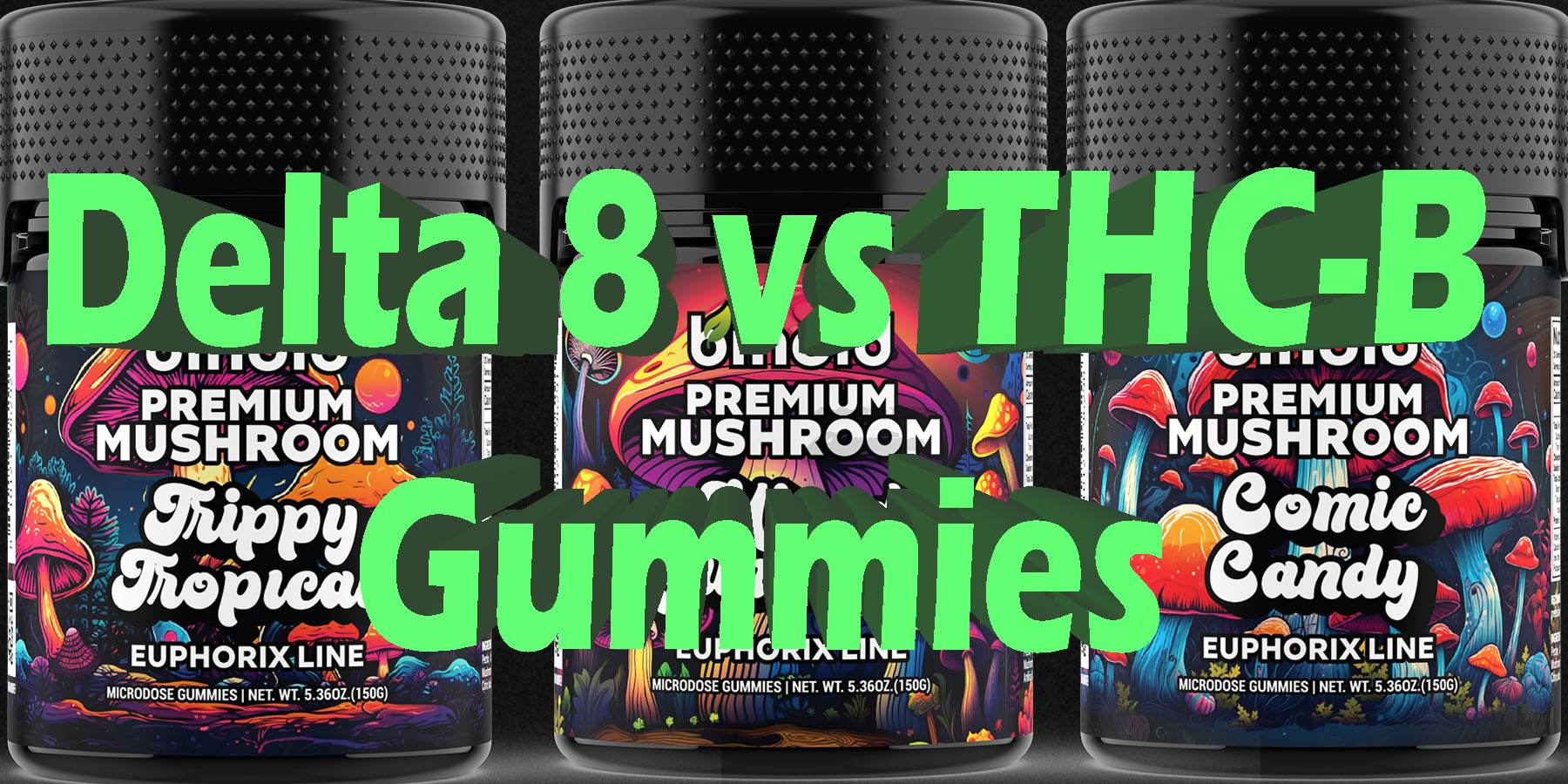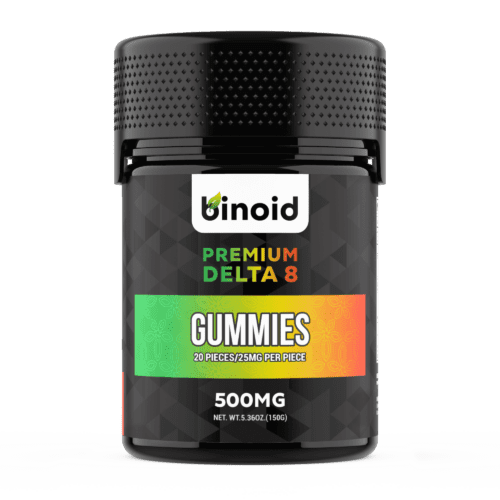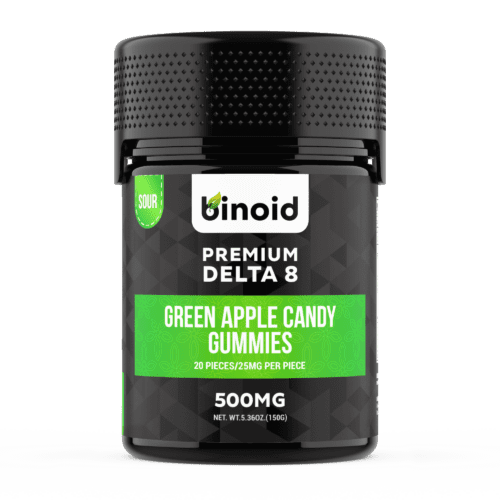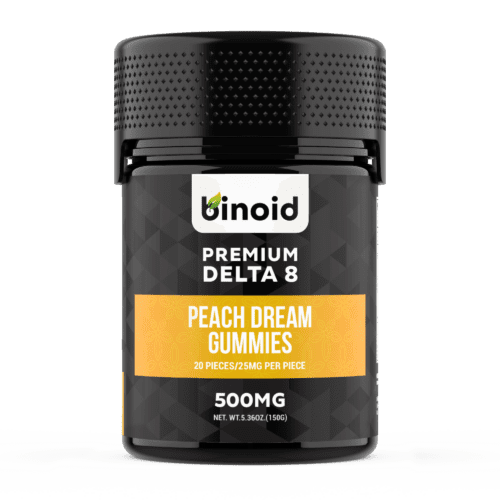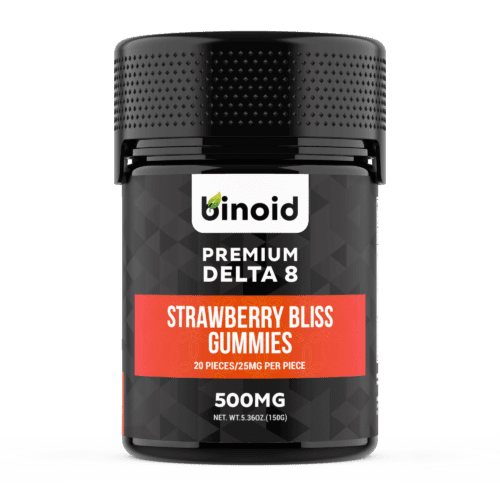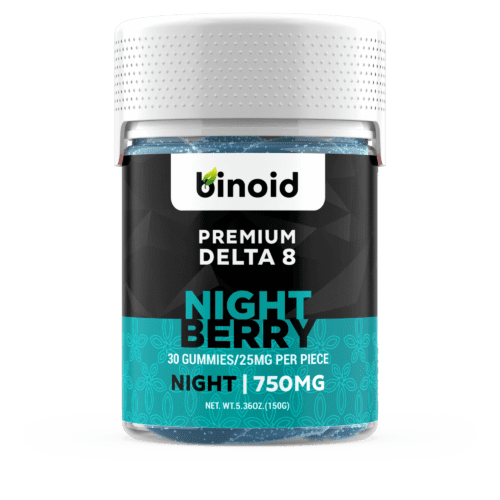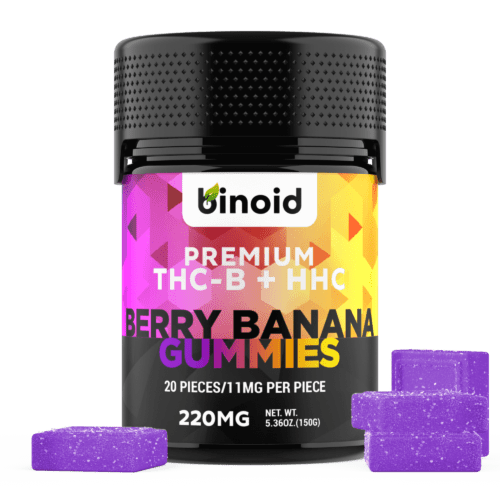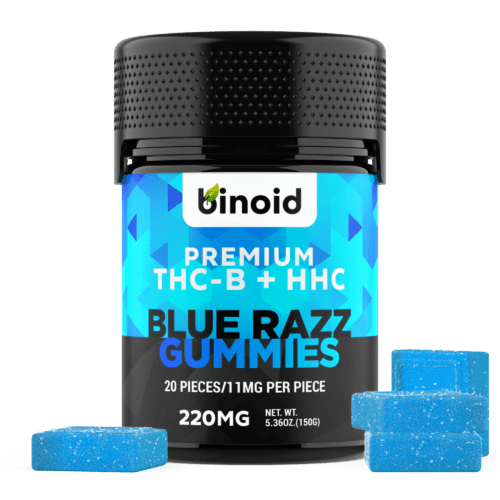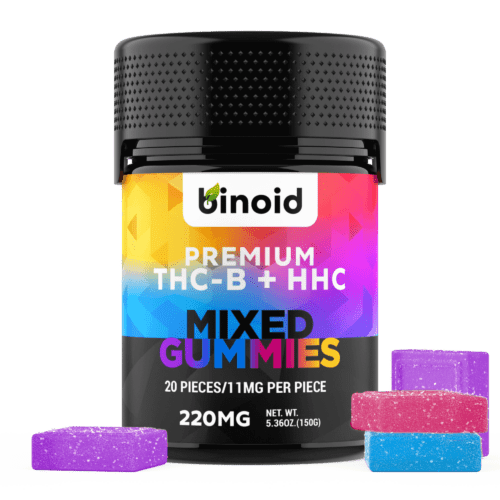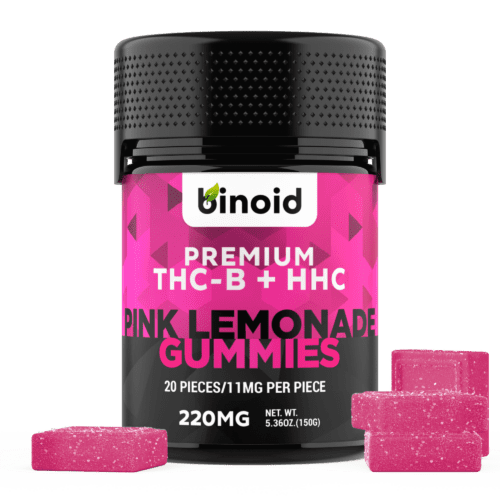In the vibrant and ever-expanding universe of botanical wellness, a particularly dynamic frontier continues to capture the collective imagination: the world of hemp-derived cannabinoids. This exciting space, fueled by a blend of ancient plant wisdom and cutting-edge chemical science, consistently unveils new avenues for personal exploration, relaxation, and bliss. Within this realm, the humble gummy has been elevated from a simple candy to a sophisticated delivery system for a vast array of unique experiences.
As scientific discovery pushes the boundaries of what we know about the hemp plant, novel and powerful compounds emerge from the laboratory, each demanding our attention and respect. This constant innovation has set the stage for a truly compelling comparison, a matchup that pits a beloved, reliable staple against a potent and enigmatic newcomer, inviting a much closer look at the remarkable diversity of effects the hemp plant holds in its molecular treasure chest. We’re talking about Delta 8 gummies vs. THC-B gummies.
To Buy Cannabinoid Gummies Click Here
Recommended products
What are Cannabinoids?
To truly appreciate the nuances of modern hemp-derived products and to navigate this exciting marketplace with confidence and informed understanding, one must first journey to the molecular heart of the hemp plant and truly grasp the marvels known as cannabinoids. These are naturally occurring chemical compounds that serve as the primary drivers behind the vast and diverse range of effects that the cannabis plant family, including its non-intoxicating cousin, hemp, can produce. One can conceptualize them as the plant’s own intricate biochemical language, a sophisticated set of chemical messengers that possess the remarkable ability to communicate with the human body in a profoundly specific and interactive way.
To date, scientists have successfully identified over one hundred distinct cannabinoids, each boasting its own unique chemical structure and, as a direct result, its own signature properties and potential effects on human physiology and consciousness. The most famous of these are undoubtedly Tetrahydrocannabinol (THC), celebrated for its euphoric properties, and Cannabidiol (CBD), known for its non-intoxicating, balancing qualities. However, these two are merely the most visible stars in a massive and brilliant constellation of compounds that includes a host of other intriguing players like Cannabigerol (CBG), Cannabinol (CBN), and the various homologs of THC, such as the two potent contenders in our matchup today.
The extraordinary mechanism through which cannabinoids interact with us lies within a sophisticated and vital biological network called the endocannabinoid system (ECS). This intricately complex system, which extensive research has confirmed is present in all vertebrates, acts as a master regulator within the body. It is a pervasive and fundamental web of receptors, metabolic enzymes, and internally produced cannabinoids (known as endocannabinoids, such as anandamide, often playfully dubbed the “bliss molecule,” and 2-arachidonoylglycerol or 2-AG) that works tirelessly around the clock to maintain a state of internal equilibrium, a biological concept known as homeostasis. The ECS plays a crucial role in modulating an incredibly wide array of our most important bodily functions, from mood and memory to appetite, sleep-wake cycles, sensory processing, and even aspects of immune function.
The primary communication ports of this vast system are its receptors, most notably Cannabinoid Receptor 1 (CB1) and Cannabinoid Receptor 2 (CB2). CB1 receptors are found in their highest concentrations throughout the brain and central nervous system, while CB2 receptors are more densely populated in the peripheral regions of the body, particularly within the cells and tissues of the immune system. Phytocannabinoids—the cannabinoids derived from plants like hemp—bear a striking structural resemblance to our body’s own endocannabinoids. This similarity allows them to bind to, influence, or otherwise interact with these CB1 and CB2 receptors, much like a specific key is designed to fit into and operate a designated lock, thereby initiating a cascade of effects.
This intricate interaction between a phytocannabinoid molecule and an ECS receptor is precisely what triggers the spectrum of physiological and psychological effects associated with cannabinoid consumption. When a cannabinoid with a strong affinity for the CB1 receptor, such as the various forms of THC, directly attaches to and activates these receptors in the brain, it can modulate the release of various neurotransmitters like dopamine and serotonin, leading to the euphoric, blissful, and perception-altering experiences that users often seek. In stark contrast, other cannabinoids, like CBD, have a much more indirect and subtle influence on the system.
CBD does not bind strongly to either the CB1 or CB2 receptor; instead, it is believed to work through a variety of other complex pathways, such as inhibiting the enzyme FAAH, which is responsible for breaking down our natural endocannabinoid anandamide, thereby enhancing our body’s own regulatory capabilities. The specific manner in which each individual cannabinoid interacts with the ECS—the particular receptors it has an affinity for, the strength and efficiency of its binding action, and its complex interplay with the dozens of other compounds found in a full-spectrum extract—is what ultimately defines its unique signature profile. This beautiful and complex biochemical dance between plant-derived compounds and our own innate biological systems forms the fundamental science behind every single cannabinoid-infused product on the market, from the simplest tincture to the most elaborately crafted gummy.
Recommended products
What are Cannabinoid-Infused Gummies and How are They Typically Made?
Cannabinoid-infused gummies represent a significant and remarkably user-friendly evolution in the methods by which people choose to consume and experience the vast array of compounds derived from the versatile hemp plant. They are, at their essence, delicious edible candies that have been skillfully and precisely infused with a verified dose of a specific cannabinoid extract. These products typically begin with a base that is familiar to any candy enthusiast—often utilizing gelatin to achieve that classic, satisfyingly chewy texture, or fruit pectin as a high-quality, vegan-friendly alternative—and are then elevated with a wide spectrum of natural and artificial flavors, vibrant colors, and various sweeteners.
The meteoric rise in the popularity of this particular format can be attributed to a powerful and synergistic combination of factors that cater directly to the preferences and lifestyle of the modern consumer. Gummies offer a level of discretion that is unparalleled by other consumption methods; being visually and aromatically indistinguishable from any other candy, they allow for consumption without drawing unwanted attention, producing any smoke, or leaving behind any lingering, tell-tale odor.
Furthermore, and perhaps most importantly for a consistent experience, they provide exceptional and reliable dosing accuracy. Unlike methods such as inhalation, where the actual intake can be highly variable and difficult to measure, each gummy is manufactured through a meticulous and controlled process to contain a specific milligram amount of cannabinoids. This gives users absolute and unambiguous control over their experience, which is crucial for both novices and experts. This trifecta of convenience, appealing flavor profiles, and dosing precision has made gummies an incredibly approachable and enjoyable entry point for beginners, as well as a reliable and consistent staple for even the most seasoned cannabinoid connoisseurs.
The creation of a high-quality, safe, and effective cannabinoid gummy is a complex, multi-stage industrial process that represents a perfect marriage of culinary artistry and exacting chemical science. It is an intricate journey that demands meticulous attention to detail and the implementation of stringent quality control protocols at every single step to ensure that the final product is not only potent and enjoyable but also certifiably pure, safe, and flawlessly consistent from one gummy to the next, and from one batch to the next. From the careful selection of hemp genetics and the cultivation of the source plant to the final, child-resistant, and hermetically sealed packaging, reputable manufacturers adhere to a strict and transparent production protocol that leaves absolutely nothing to chance.
This fascinating journey from a humble hemp plant to a perfectly crafted, potent gummy is a powerful testament to the incredible advancements in modern agricultural science and extraction technology. Here is a comprehensive, deeply detailed step-by-step look at how these immensely popular edibles are typically brought to life:
Sourcing, Cultivation, and Harvesting of Superior-Grade Hemp: The entire production chain begins with the single most important foundational element: the hemp plant itself. Premium gummy manufacturers understand that a world-class final product can only be made from world-class raw materials. This process starts with the careful selection of superior hemp genetics, choosing specific cultivars that are known to be naturally rich in the desired cannabinoids (like CBD for conversion) and beneficial terpenes. These plants are then grown on licensed and regulated domestic farms, primarily in states like Colorado, Oregon, and Kentucky, which have well-established and sophisticated agricultural programs for hemp. The most reputable brands insist on sourcing hemp that is cultivated using certified organic and sustainable farming practices, which ensure that the soil is free from contaminants and that no prohibited chemical pesticides, herbicides, or fungicides are used during the plant’s entire life cycle. Throughout the growing season, the plants are carefully monitored, and upon reaching their peak cannabinoid and terpene expression, they are harvested with care. The flower, or “biomass”—the part of the plant that is richest in these valuable compounds—is then meticulously dried and cured in climate-controlled environments to preserve its delicate chemical profile and prevent the growth of mold or mildew.
Application of State-of-the-Art Cannabinoid Extraction: With the premium, cured hemp flower ready for processing, the next critical stage is to efficiently extract the valuable cannabinoid compounds from the dense plant material. While several different methods exist, the undisputed gold standard in the high-end manufacturing industry is supercritical CO2 extraction. This highly sophisticated and capital-intensive process involves taking carbon dioxide (CO2) and subjecting it to extremely high pressure and very low temperatures. These specific conditions force the CO2 into a “supercritical” state, where it simultaneously exhibits the physical properties of both a liquid and a gas. This supercritical CO2 is then passed through a large chamber containing the ground-up hemp biomass. In this state, it acts as a powerful yet exceptionally clean solvent, efficiently dissolving the lipid-soluble cannabinoids, terpenes, and flavonoids from the plant material without damaging them through excessive heat or leaving behind toxic residues. Once the extraction cycle is complete, the pressure within the system is released, causing the CO2 to instantly revert to its normal gaseous state and evaporate completely and harmlessly, leaving behind a pure, potent, and entirely solvent-free crude cannabinoid oil. While less expensive methods like ethanol or hydrocarbon extraction are also used, they carry a much higher risk of leaving residual solvents if the oil is not properly and extensively purged afterward.
Intensive Purification via Winterization and Multi-Stage Distillation: The crude cannabinoid oil that is obtained from the initial extraction is incredibly potent but still contains a variety of undesirable components from the raw plant matter. These include things like fats, lipids, plant waxes, and chlorophyll, all of which can negatively impact the final product’s flavor, appearance, texture, and long-term stability. To create a cleaner, purer, and more palatable oil that is suitable for infusion into a gourmet edible product, this crude extract must undergo an intensive, multi-phase refinement process. The first step is typically winterization, a process in which the crude oil is mixed with food-grade ethanol and then frozen at sub-zero temperatures for a period of 24-48 hours. The extreme cold causes the unwanted fats, lipids, and waxes to congeal, solidify, and precipitate out of the solution, allowing them to be easily removed through a series of micro-filters. Following winterization, the now cleaner oil proceeds to the distillation stage. Using advanced short-path or wiped-film distillation equipment, the oil is gently heated under a deep vacuum. This precise control of heat and pressure allows individual compounds to be separated based on their unique boiling points and molecular weights. This highly precise step not only purges any remaining impurities but also allows manufacturers to isolate specific cannabinoids (creating a nearly 100% pure “isolate”) or to create a refined, high-potency oil with a broad spectrum of cannabinoids. The end result of this intensive purification is a beautiful, highly refined, transparent, and golden-hued oil known as distillate
Molecular Conversion via Isomerization and Synthesis: This is a highly specialized, additional step conducted in a sophisticated laboratory environment that is unique to the production of most minor cannabinoids like Delta 8 and THC-B. This is necessary because these compounds exist in such minuscule, often undetectable, quantities naturally in the hemp plant that it is not economically or practically feasible to extract them directly. Instead, manufacturers leverage safe and well-understood chemical processes to create them from a more abundant precursor. For Delta 8, this involves the isomerization of CBD, where an acid catalyst is used to rearrange the CBD molecule into its isomer, Delta 8 THC. For THC-B, a more complex synthetic process might be used, which involves chemically modifying a CBD precursor to construct the THC-B molecule with its characteristic four-carbon-atom tail. Following these conversion or synthesis reactions, the resulting oil undergoes another rigorous series of purification and cleansing steps, such as chromatography, to remove any and all residual catalysts or potential byproducts. This ensures the final novel cannabinoid distillate is pure, safe, and ready for infusion, with its specific cannabinoid profile rigorously verified by third-party lab testing.
Gourmet Formulation and Culinary Preparation of the Gummy Base: Concurrent to the cannabinoid extract being perfected in the laboratory, a separate culinary team prepares the gummy candy base on an industrial scale. This is a large-scale cooking process that requires the precision and consistency of a scientific experiment. For a classic gummy with that familiar firm chew, the recipe typically includes high-quality gelatin, purified water, sweeteners like corn syrup and granulated sugar, and food-grade acids such as citric acid or malic acid for a touch of tartness and flavor enhancement. For the rapidly growing vegan market, animal-derived gelatin is swapped out for fruit pectin, a plant-based gelling agent that creates a slightly softer, cleaner bite. At this stage, premium, often all-natural, flavorings derived from real fruit purees and botanical extracts are carefully selected to create the desired taste profile. Natural colorings, sourced from ingredients like beet juice, spirulina, or turmeric, are also added to give the gummies their vibrant, appealing appearance. All of these ingredients are meticulously measured and combined in massive, steam-jacketed industrial kettles and cooked to an exact temperature and viscosity, known as the Brix, to achieve the perfect, consistent gummy base.
Homogenization and Precision Cannabinoid Infusion: This is arguably the most critical and technically challenging step in the entire manufacturing process for ensuring product consistency and consumer safety. The prepared cannabinoid distillate—whether it be Delta 8, THC-B, or a complex blend of multiple cannabinoids—is meticulously measured to a precise potency that is calculated for the entire batch, often down to the microgram. This highly refined, thick oil is then introduced into the hot, liquid gummy mixture within the kettle. It is then subjected to an intensive process of high-shear mixing and industrial-grade homogenization. This vigorous, powerful blending guarantees that the cannabinoid extract is perfectly and evenly distributed throughout every single drop of the gummy slurry, achieving a uniform molecular suspension. Without this essential step, the oil-based cannabinoids could pool together, resulting in “hot spots” where some gummies in the batch could have a dangerously high dose while others have virtually none. Proper homogenization is the absolute key to a predictable, safe, and reliable edible experience.
Product Depositing, Molding, and Atmospheric Curing: Once the cannabinoid-infused gummy mixture is perfectly homogenized and has reached the ideal temperature for depositing, it is transferred from the cooking kettles to a specialized machine called a depositor. This machine operates with extreme precision, dispensing the exact same amount of the liquid gummy solution into vast trays of molds, ensuring each gummy is a uniform weight and size. These food-grade silicone or starch molds can be made in any number of conceivable shapes, from classic gummy bears and worms to sophisticated cubes, domes, rings, or custom brand-specific shapes. After being filled, the trays of molds are carefully transported into large, environmentally controlled curing rooms. Here, the gummies are left to set and cure, typically for a period of 24 to 72 hours, under tightly regulated conditions of temperature and humidity. This curing process is vital for several reasons: it allows the gelatin or pectin to fully set and cross-link, which develops the final desired texture and chewiness of the gummy, and it allows for a controlled amount of excess moisture to evaporate, which is absolutely crucial for ensuring the product’s long-term shelf stability and preventing microbial growth.
Final Finishing Touches and Optional Product Coating: After the gummies have fully cured and solidified, they are de-molded from their trays, often by mechanical means. At this point, they may go through a final finishing step to enhance their flavor, texture, and appearance, as well as their handling. This often involves placing the gummies into a large, rotating drum or “tumbler” where a specific coating is applied. For a classic sweet gummy, this might be a light coating of fine sugar crystals or a non-stick carnauba wax polish. For the ever-popular sour varieties, a specialized mixture of sugar and a souring agent like citric acid or malic acid is used to provide that signature tangy, mouth-puckering kick. This coating not only adds an extra dimension of flavor and sensory experience but also serves the very practical purpose of helping to prevent the individual gummies from sticking together in the final packaging.
Mandatory, Full-Panel Third-Party Laboratory Testing: Before a single gummy from a completed batch is ever packaged for sale, a reputable and transparent brand will send representative samples to an independent, ISO 17025-accredited, third-party laboratory for a comprehensive battery of analytical tests. This is the most crucial, non-negotiable step for guaranteeing consumer safety, product legitimacy, and brand integrity. The lab performs a series of tests to verify several key metrics. The cannabinoid potency test confirms the exact milligram amount of Delta 8, THC-B, and any other cannabinoids, ensuring the product is accurately labeled and legally compliant. The full panel safety analysis screens for a wide range of potential contaminants, including any residual solvents left over from extraction or synthesis, heavy metals (like lead, arsenic, and mercury) that may have been absorbed from the soil, dozens of specific pesticides, and microbial contaminants like mold, yeast, E. coli, and salmonella. The resulting multi-page report is called a Certificate of Analysis (COA), and it must be made easily accessible to all consumers.
Secure, Compliant, and Informative Packaging and Labeling: The final step in this intricate and carefully controlled process is to package the fully tested and approved gummies into their final retail containers. To protect the integrity, freshness, and potency of the product, the packaging must be both hermetically sealed and opaque to shield the gummies from degradation due to exposure to oxygen and UV light. In most jurisdictions, the packaging is also legally required to be certified as child-resistant. The product’s label must be clear, accurate, and fully compliant with all applicable state and federal regulations. A compliant label should clearly state the type and amount of active cannabinoid per gummy and per package, a full list of all ingredients and potential allergens, detailed nutritional information, suggested usage instructions and stern warnings, manufacturing and expiration dates, and, critically, a specific batch number and a scannable QR code that links directly to the third-party lab test results (the COA) for that exact batch, ensuring the ultimate level of consumer transparency and trust.
Recommended products
Breaking Down Today’s Cannabinoid Gummies Matchup: Delta 8 Gummies vs. THC-B Gummies
With a firm and deeply detailed understanding of the core science that governs cannabinoids and the meticulous, multi-stage industrial process required to craft a premium infused gummy, we can now turn our undivided attention to the main event. This is a truly fascinating tale of two distinct molecular structures, a matchup that pits a familiar, gentle isomer against a newly synthesized, powerful homolog. In one corner of the ring, we have the celebrated and widely adopted favorite, Delta 8 THC, a cannabinoid that has earned its immense popularity for its characteristically clear-headed, functional, and enjoyably mild effects.
In the opposing corner stands the potent and intriguing newcomer, THC-B, a compound that, despite its recent emergence, has already garnered a reputation for delivering a uniquely powerful euphoria that surpasses even that of traditional Delta 9 THC. Their compelling matchup is not about determining a simple winner, but about deeply understanding the significant differences in their potency, their resulting effects, and their appropriate use cases, empowering you to make a safe and informed decision tailored to your desired experience.
Contender #1: Delta 8 Gummies
Delta 8 gummies have rapidly and decisively carved out a significant and loyal niche within the expansive hemp marketplace, becoming the go-to choice for a diverse and growing range of consumers who are seeking a very particular kind of cannabinoid experience. They are often framed and rightfully celebrated as the ideal intermediate step—a gentle, welcoming introduction for those who are curious about the world of THC but are perhaps wary of the renowned intensity that can sometimes be associated with traditional cannabis products.
These popular gummies are widely celebrated for their unique ability to provide a tangible sense of blissful elevation and serene relaxation, all without the heavy cognitive fog or potential for over-stimulation that can sometimes accompany more potent cannabinoids. This highly sought-after profile of effects has made them an incredibly popular choice for enhancing social gatherings, sparking creative endeavors, or simply unwinding at the end of a long, demanding day. They offer a sophisticated way to elevate the moment while maintaining a comfortable and desirable level of presence and mental clarity.
At its most fundamental level, Delta 8 THC, or its full scientific name Δ8-tetrahydrocannabinol, is an analog, or a close chemical relative, of the more famous Delta 9 THC; with only structural difference between these two molecules is the specific location of a crucial double bond within their carbon chain structure. For Delta 8, this bond is located on the eighth carbon chain, while for Delta 9, it is found on the ninth. This seemingly minor and subtle shift in molecular geometry has a profound and direct impact on how the molecule interacts with the body’s CB1 receptors, which are highly concentrated in the brain and central nervous system. Scientific research suggests that Delta 8 binds to the CB1 receptor, but it does so with a lower affinity or binding efficiency when compared to its more powerful cousin, Delta 9. This weaker and less efficient bond is widely believed to be the primary reason for its noticeably less potent psychoactive effects.
While Delta 8 is indeed a naturally occurring cannabinoid in both cannabis and hemp, it is only found in vanishingly small, trace amounts, making direct extraction and isolation completely impractical for commercial production. Therefore, the Delta 8 THC used in nearly all gummies on the market is produced through the laboratory process of isomerization, which safely and efficiently converts abundant, hemp-derived CBD into Delta 8 THC.
The consumer world of Delta 8 gummies is anything but monotonous; it is a vibrant and dynamic marketplace offering a truly dazzling array of options that are designed to cater to virtually every palate, preference, and desired experience. This incredible variety is a direct result of a competitive industry pushing the boundaries of innovation, allowing consumers to tailor their cannabinoid journey with an unprecedented level of precision and personalization. A closer inspection of the market reveals the incredible diversity that is readily available to today’s discerning consumer:
Shapes & Sizes: The sheer creativity on display in the gummy market knows virtually no bounds. Delta 8 gummies are available in a vast and playful assortment of forms, ranging from the timeless and nostalgic gummy bears, worms, and rings to more sophisticated and adult-oriented cubes, domes, and fruit slices. Many brands also frequently release unique, custom shapes that are tied to their specific branding or to seasonal themes, adding an element of fun and collectibility. The physical size of the gummy often, though not always, correlates with its cannabinoid potency. Smaller, bite-sized gummies might contain a manageable microdose of 5mg to 10mg, making them perfect for beginners. In contrast, larger gummies, sometimes called “power-sized,” could pack a formidable 50mg or even 100mg of Delta 8, providing a potent option for experienced users or those with higher tolerances. This variety is not merely aesthetic; it plays a crucial role in allowing for easier and more precise dose management and contributes to a more enjoyable overall consumption experience.
Flavors: The flavor profiles available for Delta 8 gummies are a veritable playground for the senses, designed to delight the palate and mask the natural earthiness of the hemp extract. The options span the entire fruit spectrum, including beloved single-note classics like Strawberry, Blue Raspberry, Watermelon, Green Apple, and Mango. Beyond these staples, one can find more exotic and complex gourmet blends such as Strawberry-Kiwi, Peach-Pear, Pineapple-Coconut, or a vibrant Tropical Medley. Many premium brands place a strong emphasis on using all-natural flavorings derived from real fruit purees and botanical extracts, consciously avoiding the artificial and chemical-like taste that can often be found in lower-quality, mass-produced products. The flavor is a critical component of the overall experience, successfully transforming the simple act of taking a dose into a genuinely delightful and indulgent treat.
Potential Use of Live Resin or Live Rosin: For consumers seeking a more authentic, nuanced, and robust hemp experience, a growing number of premium Delta 8 gummies are now being infused with either live resin or live rosin. These are highly sought-after, full-spectrum concentrates that are produced from fresh hemp plants that have been flash-frozen at the very moment of harvest, often right in the field. This cryogenic freezing process is crucial because it perfectly preserves the full spectrum of volatile terpenes, flavonoids, and other delicate plant compounds that are typically lost during the traditional weeks-long drying and curing process. Live resin is subsequently extracted using a light hydrocarbon solvent, while live rosin utilizes a completely solventless method of just heat and pressure. Infusing this terpene-rich, full-spectrum extract into a gummy alongside the Delta 8 distillate can lead to a more flavorful, aromatic, and potent experience due to the “entourage effect,” the theory that all the plant’s compounds work together synergistically to enhance and modulate one another’s effects.
Occasionally Strain-Infused: Taking the concept of tailored effects one step further, many Delta 8 gummies are infused with botanical terpene blends that are formulated to precisely mimic the aromatic and effectual profiles of famous cannabis strains. Terpenes are the aromatic compounds responsible for the distinct scent and flavor of virtually all plants, from the limonene in lemons to the pinene in pine trees. In hemp, they also play a significant role in modulating the effects of cannabinoids. By adding a specific terpene profile from a well-known Sativa strain like Sour Diesel or Jack Herer, a gummy might be geared towards promoting a more uplifting, energetic, and cerebrally-focused experience. Conversely, using the terpene blend from a classic Indica strain like Granddaddy Purple or Northern Lights could create a gummy designed to encourage deep physical relaxation and tranquility. Hybrid strain profiles, such as those from Blue Dream or OG Kush, aim to provide a more balanced effect between mind and body.
Sometimes Combined with Functional Ingredients: In an effort to create a more targeted and holistic product, some innovative brands are enhancing their Delta 8 gummy formulations with other functional, non-cannabinoid ingredients that are known for their supportive properties. For instance, a gummy marketed for “Sleep” might be co-infused with a precise dose of Melatonin, the hormone our body naturally produces to regulate the sleep-wake cycle, or botanicals like chamomile and valerian root. A “Focus” or “Energy” blend could include ingredients like L-Theanine, an amino acid found in green tea known for promoting a state of calm alertness, or even B-vitamins. These additions are not intended to make health claims but aim to complement the inherent effects of Delta 8 THC, offering a more purpose-driven and synergistic edible experience for the user.
Sometimes Combined with Other Cannabinoids: Perhaps the most exciting and innovative frontier in the modern gummy market is the deliberate creation of complex and sophisticated cannabinoid blends. Forward-thinking manufacturers are moving well beyond simple single-cannabinoid formulations to craft intricate cannabinoid cocktails designed to produce highly specific and unique effects. These increasingly popular blends can be broadly categorized by the general potency of the cannabinoids being added to the Delta 8 base:
Non-Intoxicating Cannabinoids: Combining Delta 8 with non-psychoactive cannabinoids like CBD, CBG, or CBN is an extremely common practice designed to create balance. CBD (Cannabidiol) is widely known for its calming and balancing properties and can effectively temper the psychoactive “edge” of THC for a smoother experience. CBG (Cannabigerol), often called the “mother of all cannabinoids,” is frequently associated with a clear-headed, focused feeling. CBN (Cannabinol) is a cannabinoid that forms as THC ages and has developed a strong reputation for its very relaxing and sedative-like qualities, making a Delta 8 + CBN gummy an incredibly popular choice for nighttime use.
Mild Potency Cannabinoids: For those seeking a slightly different psychoactive flavor or a more energetic profile, Delta 8 might be paired with other cannabinoids known for their milder effects. Delta 10 THC is often described by users as being more energizing and cerebrally stimulating, akin to a Sativa strain. THCV (Tetrahydrocannabivarin) is a unique cannabinoid known for its clear-headed, stimulating qualities and, in some studies, its potential to suppress appetite. THCM is a more recently discovered cannabinoid whose effects are still being explored.
Moderate Potency Cannabinoids: To create a product that effectively bridges the potency gap or introduces a different dimension to the experience, some Delta 8 blends incorporate other moderately potent cannabinoids. This can include compounds like THCA, which converts to Delta 9 upon heating, or Delta 11 THC, which is thought to be more potent than Delta 9 when metabolized. These additions aim to either modify the psychoactive intensity or introduce unique qualities to the experience.
Strong Potency Cannabinoids: This is a very common practice. To create a more powerful experience without reaching the intensity of a pure, highly potent product, many blends fortify a Delta 8 base with stronger cannabinoids. This can include powerhouse molecules like THC-P, THC-JD, HHC, THC-B, or THC-H. This creates a “Delta 8 on steroids” effect, significantly enhancing the potency and duration, catering to those with higher tolerances.
Recommended products
The overall effects experienced from consuming a Delta 8 gummy are a direct and tangible result of its specific formulation, creating a vast and nuanced spectrum of potential experiences for the user. A standard, unadulterated gummy containing only pure Delta 8 THC distillate typically delivers a smooth, manageable, and wonderfully lucid ‘high’. Users frequently report feeling pleasantly relaxed, significantly uplifted in mood, and gently euphoric, but crucially, without the intense cerebral rush, potential for time dilation, or risk of paranoia that can sometimes accompany more potent cannabinoids. It is often described as a functional, clear-headed buzz that allows for easy engagement in social activities, creative work, or outdoor adventures.
When this base experience is enhanced with the inclusion of full-spectrum live resin, the journey becomes richer, deeper, and more dimensional, with the preserved terpenes providing a more authentic “full-plant” feel and flavor. Strain-infused gummies skillfully guide this lucid high in a specific direction—upward toward energetic stimulation with Sativa profiles, or downward toward deep, full-body calm with Indica profiles. The addition of functional ingredients like Melatonin or L-Theanine further fine-tunes the experience for a particular purpose, while the inclusion of other cannabinoids opens up a whole new universe of possibilities, from the supremely balanced and gentle feel of a D8:CBD blend to the profoundly potent and long-lasting journey offered by a gummy expertly fortified with a powerhouse cannabinoid.
Pros & Cons
When thoroughly evaluating Delta 8 gummies as a potential choice for your cannabinoid journey, it is immensely beneficial to carefully weigh their distinct and compelling advantages against their potential drawbacks and the realities of the current market. This balanced and honest perspective is crucial for making a well-informed decision that aligns perfectly with your individual needs, tolerance, location, and circumstances.
Pros:
Milder and More Manageable Psychoactive Experience: The most frequently cited and appreciated benefit of Delta 8 is its characteristically gentler high. For individuals who are new to the world of THC or for those who know they have a low tolerance, Delta 8 provides a less intimidating and more approachable introduction, offering a tangible state of relaxation and bliss with a significantly lower risk of feeling overwhelmed or uncomfortable.
Enhanced Mental Clarity and Focus: A large number of users consistently report that Delta 8 allows them to maintain a greater degree of mental clarity and cognitive function when compared to more potent cannabinoids. This widely described “clear-headed high” can make it a more suitable and functional option for daytime use, creative pursuits, or social situations where one wishes to remain sharp, witty, and fully engaged in conversation.
Favorable Federal Legal Status (Under the 2018 Farm Bill): According to the 2018 Agriculture Improvement Act (the Farm Bill), hemp and all of its derivatives that contain less than 0.3% Delta 9 THC by dry weight are considered federally legal. Since the Delta 8 on the market is derived from federally compliant hemp, it falls under this legal protection, making it legally accessible for purchase in many states, particularly through online retailers that ship nationwide.
Wider Accessibility in Certain Regions: Stemming directly from its specific federal legal status, Delta 8 products can often be legally shipped to and purchased in many states where recreational or even medical cannabis remains illegal. This has made cannabinoid experiences legally accessible to a much broader segment of the American population who would otherwise have no options.
Vast Product Diversity and Innovation: The fiercely competitive and rapidly growing Delta 8 market has spurred an incredible wave of innovation among manufacturers. As a result, consumers can now find an almost overwhelming variety of potencies, flavors, unique cannabinoid blends, and highly specialized formulations, allowing for a deeply personalized and tailored experience.
Lower Incidence of Unwanted Anxious Feelings: Due to its reduced potency and different interaction with the CB1 receptor, many users find that Delta 8 is significantly less likely to induce feelings of anxiety, paranoia, or general unease, which can sometimes be unwelcome side effects of consuming higher doses of more powerful cannabinoids.
Inherently Convenient and Precise Dosing: Like all well-made Delta 8 gummies, the format itself allows for very simple, repeatable, and highly accurate dosing. This completely removes the guesswork inherent in other consumption methods and allows users to carefully control, understand, and document their level of consumption for consistent results.
Completely Discreet Method of Consumption: Gummies offer a perfectly odorless and visually inconspicuous way to enjoy cannabinoids, making them an incredibly convenient and worry-free choice for a wide range of settings, lifestyles, and situations where discretion is valued.
Cons:
Complex, Contradictory, and Shifting Legality: While Delta 8 is federally legal under the Farm Bill, its status is highly contentious and unstable at the state level. Numerous state legislatures and regulatory bodies have moved to specifically ban or heavily restrict its sale, creating a confusing, inconsistent, and constantly changing patchwork of laws across the country. It is absolutely crucial for consumers to verify the current laws in their specific state and locality.
Pervasive Lack of Federal Regulation and Oversight: The market for Delta 8 currently operates in a largely unregulated federal space. This “Wild West” environment means that product quality, safety, and labeling accuracy can vary dramatically between different brands. Without FDA oversight, consumers must be extremely diligent in vetting brands and insisting on comprehensive, third-party lab tests to avoid potentially impure, unsafe, or inaccurately labeled products.
Potential Concerns Over Conversion Byproducts: Since the vast majority of Delta 8 is created through a chemical conversion process from CBD, there is a theoretical potential for residual chemicals, unreacted acids, or unknown byproducts to remain in the final product if the process is not performed by skilled chemists and followed by rigorous, multi-stage purification and testing.
Will Still Result in a Positive Drug Test: Despite its milder effects and different legal status in some areas, Delta 8 THC is structurally very similar to Delta 9 THC. It will be metabolized by the body into compounds that are often indistinguishable from Delta 9 metabolites on a standard drug test, leading to a positive result for THC.
Recommended products
Contender #2: THC-B Gummies
Now, let us turn our attention to the other contender in this matchup, a potent and relatively new cannabinoid that occupies a fascinating space in the hierarchy of THC analogs. THC-B gummies are a significant step up in potency from Delta 8, and even from Delta 9, designed for those who are already well-acquainted with traditional THC and are seeking a more profound and robust euphoric experience. These products are for the intermediate to advanced user, offering an intensity that commands respect and a clear understanding of personal tolerance.
The emergence of THC-B is a direct result of the ongoing scientific exploration into the minor cannabinoids of the hemp plant, revealing molecules with unique properties that can provide distinctly different shades of relaxation and bliss. As such, THC-B gummies represent an exciting evolution in the market, providing a powerful new option for those looking to explore beyond the familiar and into the realm of truly potent effects.
The powerful molecule at the heart of these gummies is Tetrahydrocannabutol (THC-B) –a homolog of the famous Delta 9 THC, which means it shares the same basic structure but differs in the length of its alkyl side chain. While Delta 9 THC has a pentyl side chain (containing five carbon atoms), THC-B has a slightly shorter butyl side chain (containing four carbon atoms). Initially, one might assume that a shorter chain would lead to a weaker effect, but early research and anecdotal reports suggest the opposite. It is believed that the specific shape and structure of the butyl chain allows THC-B to bind to the CB1 receptors in the brain with greater affinity and efficiency than Delta 9 THC.
This stronger bond is the scientific basis for its reported higher potency. Like many other minor cannabinoids, THC-B occurs naturally in the cannabis plant in only trace amounts, making direct extraction unfeasible for commercial production. Therefore, the THC-B found in gummies is synthesized in a laboratory setting, typically using a hemp-derived CBD precursor, which is then chemically altered to create the THC-B molecule.
The market for THC-B gummies, while newer and less extensive than that for more established cannabinoids, is rapidly growing and innovating. These products are often positioned as premium offerings for experienced users, with a strong focus on delivering a potent and high-quality experience. The variety of options available reflects the unique characteristics of this powerful cannabinoid:
Shapes & Sizes: THC-B gummies are produced in all the standard shapes and sizes, from cubes and rings to custom brand shapes. However, a key difference lies in the dosage per unit. Because THC-B is significantly more potent than Delta 9, a single gummy will typically contain a lower milligram amount of the active cannabinoid, or it will be clearly scored to allow for easy division into smaller, more manageable doses. A typical starting dose for an experienced user new to THC-B might be just a few milligrams, so precision in dosing is a major focus for reputable brands.
Flavors: As with all premium edibles, flavor is a top priority. THC-B gummies come in a wide array of delicious fruit flavors, such as Strawberry, Blue Raspberry, and Tropical Punch. The goal of the culinary formulation is to create a delightful taste experience that makes the consumption process enjoyable. High-quality brands will use natural flavorings and colorings to ensure the product not only tastes good but also meets the standards of health-conscious consumers, avoiding artificial ingredients wherever possible.
Potential Use of Live Resin or Live Rosin: The combination of a potent cannabinoid like THC-B with a full-spectrum, terpene-rich extract like live resin or live rosin creates a powerful synergy. The terpenes and minor cannabinoids in the live extract can produce a robust “entourage effect,” which may significantly enhance and modulate the already strong effects of the THC-B. This results in a more complex, nuanced, and profoundly powerful experience that is often described as being more “full-bodied” and closer to the feeling of consuming the whole plant. These products are intended for connoisseurs seeking the ultimate in flavor and effect.
Occasionally Strain-Infused: To provide users with more control over the character of their experience, some THC-B gummies are infused with botanical terpene blends that mimic the profiles of well-known cannabis strains. By adding a Sativa-like terpene profile, a brand can aim to create a THC-B experience that is more uplifting, energetic, and cerebrally focused. Conversely, an Indica-leaning terpene blend would be used to promote a more sedative, deeply relaxing, and body-focused effect. These infusions help to “steer” the powerful effects of THC-B in a desired direction.
Sometimes Combined with Functional Ingredients: While less common than with milder cannabinoids like Delta 8, some brands may add functional ingredients to their THC-B gummies to create a more specialized product. For example, a “chill” or “relax” blend might include a small amount of L-Theanine or chamomile to complement the deeply relaxing physical effects of the THC-B. However, the dominant effects of the THC-B molecule are so pronounced that these additions are typically more for subtle nuance rather than a primary driver of the experience.
Sometimes Combined with Other Cannabinoids: THC-B is an excellent candidate for cannabinoid blending, where its potent effects can be either enhanced or balanced by other compounds. This is, in fact, the most common way to find THC-B on the market.
Non-Intoxicating Cannabinoids: To create a smoother and more balanced high, THC-B is often blended with non-psychoactive cannabinoids like CBD or CBG. CBD is well-known for its ability to temper the intense euphoria of stronger THC analogs, potentially reducing the likelihood of anxious or overwhelming feelings. CBG can contribute to a feeling of clear-headedness, which can be a desirable counterpoint to the powerful effects of THC-B.
Mild Potency Cannabinoids: It is less common to find THC-B blended with milder cannabinoids like Delta 10 or THCV, as their subtle effects would likely be completely overshadowed by the potency of the THC-B.
Moderate Potency Cannabinoids: This is a very popular strategy. Many of the most common products on the market are not pure “THC-B gummies” but rather “Delta 8 + THC-B gummies” or “Delta 9 + THC-B gummies.” In these formulations, a base of Delta 8 or Delta 9 provides the main body of the high, while a smaller amount of THC-B is added to significantly “boost” the overall potency and euphoria, creating a powerful and layered experience.
Strong Potency Cannabinoids: For the absolute upper echelon of potency, some manufacturers create “super blends” that combine THC-B with other powerhouse cannabinoids like THC-P, THC-JD, HHC, or THC-H. These products are designed for a very small niche of consumers with extremely high tolerances and are marketed as providing one of the most intense and profound experiences legally available from hemp.
Recommended products
The overall effects of a THC-B gummy are characterized by a potent and fast-acting euphoria. Users often report a powerful head and body sensation that is noticeably stronger and more immersive than what is experienced with traditional Delta 9 THC. The experience is often described as being intensely blissful, deeply relaxing, and providing a significant shift in sensory perception. While extremely potent, some anecdotal reports suggest that the duration of THC-B’s peak effects may be slightly shorter than that of other ultra-potent cannabinoids like THC-P, making it a powerful but potentially more manageable experience for seasoned users.
When consumed as part of a blend, THC-B acts as a powerful amplifier, taking the familiar effects of other cannabinoids and elevating them to a new level of intensity and euphoric depth. This cannabinoid is a significant step up from the mainstream and should be approached with caution and respect for its formidable power.
Pros & Cons
Given its significant potency, it is crucial to approach THC-B with a clear and comprehensive understanding of its unique advantages and its potential drawbacks. This is not a cannabinoid for the inexperienced, and a balanced assessment is critical for any consumer considering this powerful product.
Pros:
Significantly Higher Potency than Delta 9 THC: For experienced users who are looking for an experience that goes beyond traditional THC, THC-B offers a reliable and significant increase in potency. Its strong binding affinity for the CB1 receptor translates to a more profound and intense euphoric and relaxing experience.
Powerful and Immersive Euphoria: The primary reported effect of THC-B is a strong and encompassing sense of euphoria and bliss. It is highly sought after by those who prioritize a powerful mood-lifting and deeply enjoyable psychoactive experience.
Excellent for High-Tolerance Users: Many long-term consumers of Delta 9 find that their tolerance builds over time, diminishing the effects. THC-B’s higher potency can effectively overcome this tolerance, providing a satisfying experience for those who have become desensitized to less potent cannabinoids.
Fast-Acting Effects (Anecdotal): Many users report that the onset of THC-B’s effects feels faster and more immediate compared to other edibles. This can be an advantage for those who prefer not to wait a long time for the experience to begin.
Highly Effective in Cannabinoid Blends: THC-B is an exceptional “booster” cannabinoid. Its ability to dramatically enhance the potency and character of another cannabinoid base has led to the creation of innovative, popular, and highly effective blended products.
Federally Compliant When Derived from Hemp: As a novel cannabinoid derived from legally compliant hemp containing less than 0.3% Delta 9 THC, THC-B falls under the protection of the 2018 Farm Bill, making it federally legal and accessible in many states where cannabis is not.
Requires Smaller Doses for Strong Effects: Due to its high potency, a smaller milligram amount of THC-B is needed to achieve a powerful effect. This can make it a very efficient cannabinoid, as a single gummy can be divided into multiple doses.
Represents Cutting-Edge Cannabinoid Innovation: The availability of novel cannabinoids like THC-B is a testament to the rapid innovation in the hemp industry. It offers adventurous consumers the opportunity to explore new facets of the plant’s potential and be on the forefront of cannabinoid science.
Recommended products
Cons:
High Potential for Overwhelming Effects: The primary advantage of THC-B—its potency—is also its most significant risk. For users with low to moderate tolerance, or even for experienced users who misjudge the dose, the effects can be unpleasantly intense and overwhelming, potentially leading to anxiety or discomfort. It is not suitable for beginners.
Profound Lack of Long-Term Scientific Research: THC-B is a very new discovery in the grand scheme of cannabinoid science. As such, there is a significant lack of long-term clinical research on its effects, its safety profile, its impact on health, and its full range of potential side effects. Users are treading on relatively new ground.
Complex and Shifting State-Level Legality: Like all other novel psychoactive cannabinoids derived from hemp, THC-B exists in a precarious legal gray area. While federally legal for now, many states are enacting “total THC” laws or explicitly banning specific isomers and homologs, which could make THC-B illegal in an increasing number of jurisdictions without warning.
Often Found Only in Blends: While its use in blends is a pro, it can also be a con for those who wish to experience the pure, unadulterated effects of the molecule. It can be difficult to find products containing only THC-B, making it challenging to isolate and understand its unique character without the influence of other cannabinoids.
Other Key Things You Should Know About When Choosing Either Delta 8 Gummies or THC-B Gummies
Selecting the right gummy from this particular matchup is a decision that requires careful consideration of your personal tolerance and desired intensity. The difference in potency between the gentle Delta 8 and the powerful THC-B is substantial, and ensuring a positive, safe, and enjoyable journey requires a commitment to due diligence, personal research, and honest self-assessment. In this dynamic and often confusing market, the responsibility to become educated, discerning, and extremely cautious falls squarely on you, the consumer. Whether you are confidently leaning towards the familiar, manageable uplift of Delta 8 or are cautiously contemplating the profound euphoria of THC-B, there are several universal factors and non-negotiable best practices that everyone must consider before making a purchase and consuming an edible from either of these distinct categories:
Hemp Source, Location, and Farming Practices: The quality, purity, and safety of a cannabinoid gummy begin at the very root—quite literally. The hemp plant, Cannabis sativa L., is a known bioaccumulator. This means it has a natural tendency to readily absorb substances from the soil, air, and water in its surrounding environment. If the soil is contaminated with industrial pollutants like heavy metals (lead, arsenic, cadmium, mercury), or if the farmers irresponsibly use prohibited chemical pesticides and herbicides, those dangerous toxins can become highly concentrated in the plant tissue. This concentration is then passed on and can become even more potent in the final extracted oil. Therefore, it is absolutely essential to exclusively choose brands that source their hemp from reputable, licensed farms within the United States. Furthermore, look for companies that are transparent about their sourcing and actively prioritize certified organic and sustainable farming practices. High-quality hemp grown in clean, nutrient-rich, and tested soil is the first and most important building block of a safe, pure, and effective gummy.
Comprehensive, Up-to-Date, Third-Party Lab Testing (COAs): This is, without question, the single most important factor in vetting any cannabinoid product, but it is exponentially more critical when dealing with potent compounds like THC-B. You must adopt a strict policy of never purchasing a gummy from a brand that does not make up-to-date, batch-specific, third-party lab reports easily and publicly available. A third-party lab is an independent, accredited entity with no financial stake in the results, which ensures an unbiased and trustworthy analysis. The resulting Certificate of Analysis (COA) is your only window into the product’s true contents. You must scrutinize the potency section to verify the exact milligram amount of Delta 8 and/or THC-B per gummy. You also must check the full panel safety analysis, which screens for heavy metals, pesticides, residual solvents, and microbial life like mold and E. coli. Taking the time to learn how to read and understand a COA is your absolute best defense against unsafe, impure, or dangerously mislabeled products.
Potency, Dosing, and Respect for the Power Gap: Dosing is where this matchup requires the most attention. For Delta 8, a beginner’s dose is typically 5-10mg. For THC-B, there is no “beginner’s dose”—it is not a cannabinoid for beginners. For an experienced user trying THC-B for the first time, a starting dose should be very small, perhaps 1-2mg, or a small fraction of a single gummy. The rule of “start low and go slow” must be strictly adhered to. After taking a small, initial dose of a THC-B product, you must wait at least two full hours to gauge its full effects before even considering taking more. The potency gap between these two cannabinoids is immense, and treating them as interchangeable is a recipe for an uncomfortably intense experience.
Metabolism, Onset Time, and Duration of Effects: The way your body metabolizes edibles leads to a delayed onset (30 minutes to over 2 hours) and a long duration (4-8 hours for Delta 8). For THC-B, while the onset may feel faster to some, the overall duration of the powerful effects can still be quite long, easily lasting for several hours. You must plan accordingly. Do not consume a THC-B gummy if you have any responsibilities that require your full attention, such as driving, operating machinery, or work. Ensure you are in a safe, secure, and comfortable environment, especially when trying a potent new cannabinoid for the first time. The long duration is a commitment, so be sure you are prepared for a multi-hour experience.
A Brutally Honest Assessment of Your Tolerance: This is a critical point of self-reflection. Be brutally honest with yourself about your actual tolerance level. If you are a casual or infrequent user of Delta 8, THC-B is likely too strong a leap. Even if you are a regular user of traditional Delta 9 THC, THC-B will still be noticeably more potent and should be approached with caution. This cannabinoid is best suited for those with a genuinely high, long-term tolerance built from frequent consumption of potent cannabis products. There is no shame in sticking with the milder, more predictable effects of Delta 8 if that is what provides you with a comfortable and enjoyable experience.
Understanding Blends vs. Pure Products: Pay close attention to the product’s name and lab report. Is it a “THC-B Gummy” or a “Delta 8 + THC-B Gummy”? The latter is far more common and generally a more balanced way to experience this potent cannabinoid. A blend uses a more moderate cannabinoid like Delta 8 as the primary base, with THC-B acting as a powerful amplifier. This often provides a more well-rounded and slightly more manageable high than a pure THC-B edible might. If you do choose to explore this category, starting with a well-formulated blend from a reputable brand is a much wiser decision than jumping straight to an isolated THC-B product.
Consider the Desired Character of the Experience: Think about what you want to feel. Delta 8 is known for its clear-headed, functional, and gentle euphoria. It’s often described as relaxing but not overly sedating, allowing for activity and social engagement. THC-B, on the other hand, is known for its intense, immersive euphoria and a powerful body sensation. It is less about functional clarity and more about a profound sense of bliss and deep relaxation. Your choice should align with the type of mental and physical state you are hoping to achieve.
Diligently Checking Your State and Local Laws: The legal landscape for hemp-derived cannabinoids in the United States is a fluid, dynamic, and often confusing patchwork of federal, state, and sometimes even local regulations that can seem contradictory. While these novel cannabinoids are federally legal under the 2018 Farm Bill, many individual states have subsequently enacted their own, more restrictive laws that specifically ban or regulate the sale and possession of all psychoactive THC isomers and homologs, including both Delta 8 and THC-B. These laws are constantly being challenged, updated, and changed. Before you make any purchase, it is entirely your responsibility as a consumer to research and fully understand the current and specific laws in your location to ensure you are in full compliance.
Thoroughly Vetting Brand Reputation and Transparency: In an industry that still lacks strong, centralized federal oversight from an agency like the FDA, a brand’s public reputation and its commitment to transparency are paramount indicators of its quality and trustworthiness. This is especially true for brands selling potent products like THC-B. Look for brands that have been around for a while, exhibit a strong commitment to consumer education and safety, and have a wealth of positive, authentic customer reviews. A trustworthy brand will have a professional website, provide comprehensive educational materials, make their COAs easy to find and read, and have responsive customer service. Be extremely skeptical of any brand that uses hype marketing, makes outlandish claims, or is not completely transparent about the contents and risks of their products.
Clearly Defining Your Goals and Setting: Finally, the most important consideration is your own intention. Why are you reaching for a gummy? Are you seeking a reliable, manageable, and gentle way to unwind, enhance your mood, and take the edge off a busy day? If so, Delta 8 is almost certainly the correct and responsible choice. Or are you an experienced user with a high tolerance who is intentionally seeking a more profound, powerful, and deeply euphoric experience for deep relaxation or recreational enjoyment? Only in this latter case should THC-B be a consideration. Your setting is also crucial; Delta 8 is versatile for many situations, while THC-B is best reserved for safe, comfortable, and low-stakes environments where you can fully relax without any obligations.
Recommended products
A Spectrum of Bliss, A Question of Intensity
In the final analysis, the matchup between Delta 8 gummies and THC-B gummies does not crown a single victor but instead illuminates the beautiful and expanding spectrum of experiences available from the hemp plant. This comparison is a powerful reminder that the world of cannabinoids is not monolithic; it is a rich and varied landscape with options perfectly suited for every level of experience and desired outcome.
The choice is not about which is “better,” but which is right for you and your specific intention for that moment. Whether you seek the gentle, functional clarity of Delta 8 or the profound, immersive euphoria of THC-B, the true wisdom lies in understanding the difference, respecting the power of these molecules, and making an informed choice that leads to a safe, enjoyable, and perfectly tailored journey into bliss.

